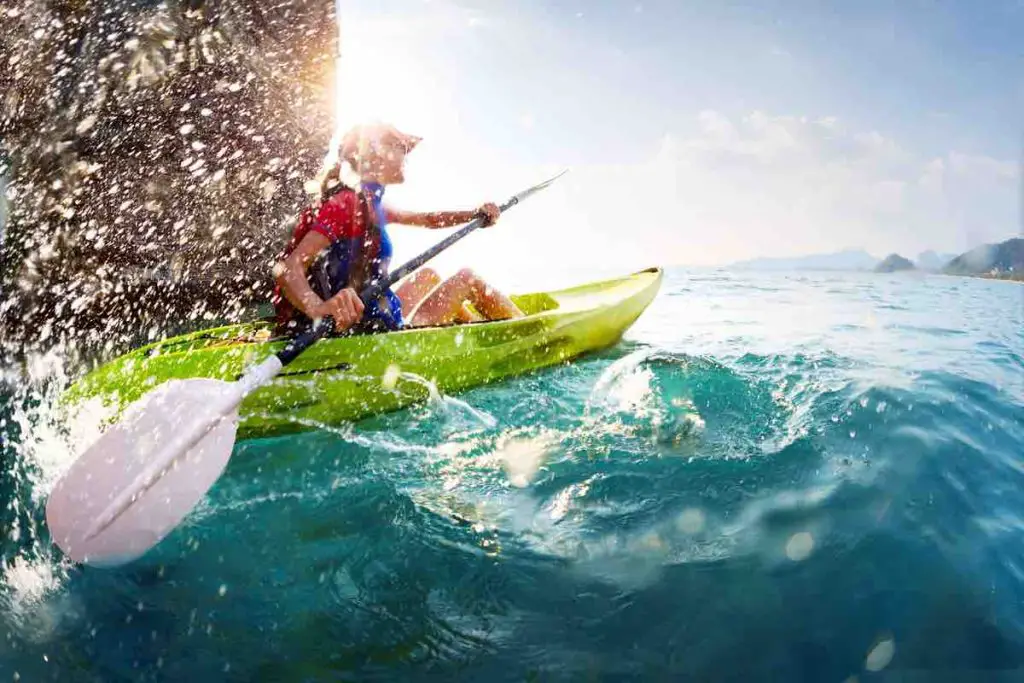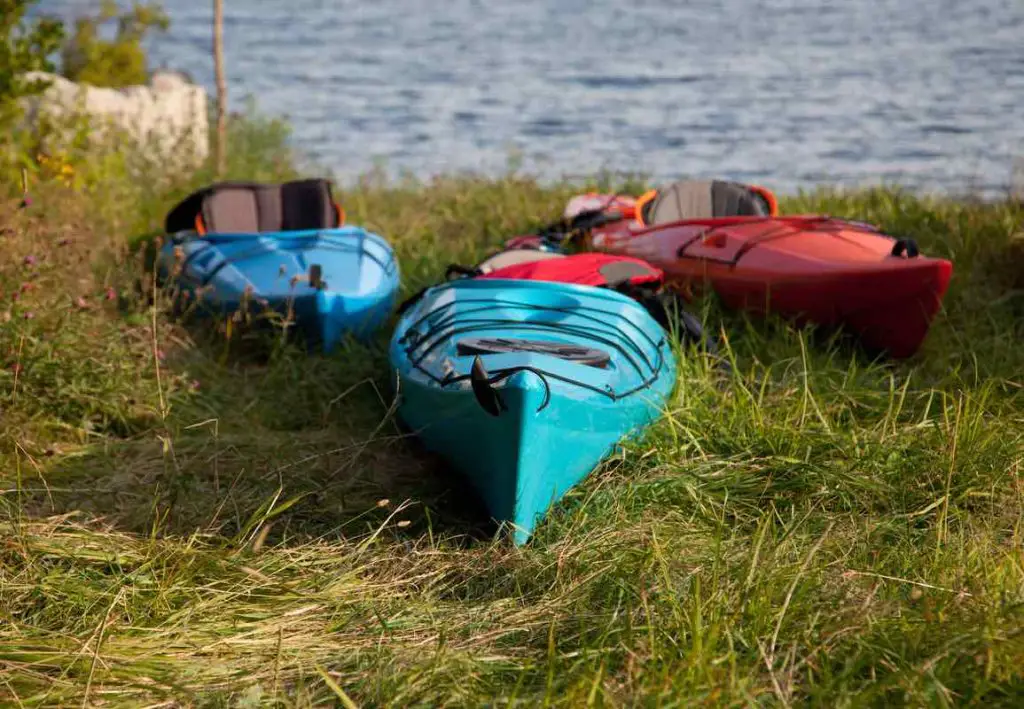Are you planning on buying a kayak and figuring out how to choose the best one? Then you’ve probably heard about skegs and rudders. They’re tools to gain better control of your vessel under challenging conditions, such as strong winds and turbulent waves. But which of the two would serve your needs best?
Skegs and rudders are great options for kayaks, depending on your particular needs. Skegs are the better way to stay stable in the water and avoid changing directions. Rudders are better when you want to change direction, going against the wind and waves.
This article discusses what skegs and rudders are, how they work, and the benefits of each item. We’ll also discuss the better option for you based on the different qualities of skegs and rudders.

What Is a Skeg?
A skeg is a ‘fin’ that is attached to the kayak. It is used to turn the kayak more accurately under challenging weather conditions. It is handy under windy conditions and on rough seas when waves are strong enough to turn your kayak in the wrong direction.
How Does a Skeg Work?
A skeg is attached on the back, underneath a kayak. It looks and works like a fin. Unlike a rudder, a skeg comes out of a slot. It can be retracted into that slot when it isn’t needed. However, some skegs aren’t retractable.
Benefits of a Skeg
A skeg keeps your kayak stable. It doesn’t move the way a rudder does; instead, your craft uses the resistance it provides to fend off strong wind or waves. That is, a skeg isn’t used to redirect the kayak but to help it stay on track.
Do you know what size of wave can your kayak handle? Click on the link to read my comprehensive guide on it. [What Size Waves Can a Kayak Safely Handle?]
What Is a Rudder?
A rudder is a blade on a kayak’s rear end that helps you steer it. You can also find them on other vessels like airplanes, ships, and boats. Rudders are essential navigation tools, especially in windy weather that can throw your kayak off course.
They become even more crucial in the case of smaller vessels, such as kayaks, which are more vulnerable under rough weather. Considering you use physical strength to move your kayak, it’s essential to have something to help you out when the wind is powerful.
Otherwise, you’ll be exhausted in no time, and you’ll have less fun kayaking. When you’re trying to get somewhere, it can be pretty frustrating if nature is working against you. There’s where a rudder comes in.
How Does a Rudder Work?
The rudder blade is attached to the back of the vessel, connected with cords, and moved with pedals. So, you’ll have to use your feet and arms when you’re kayaking with strong side wind or waves that throw you off your track.
The rudder is in the water, of course. It’s supposed to redirect the water behind the boat, which then helps steer the kayak in any direction you want.
You have to make sure that you install the pedals in the right place. You want them to be comfortably located to avoid sitting in an uncomfortable position for hours.
The basic rule is to use the left pedal whenever you want to move your kayak to the left and vice versa. You won’t have to press too hard to move to one side or the other because all you’re doing is slightly turning the blade a certain way. That doesn’t take too much strength.
You can learn more about attaching a rudder to your kayak here.
Benefits of a Rudder
Rudders are incredibly easy to use. You’ll figure them out in no time. As mentioned before, you have to use the left pedal to go left and the right pedal to go right. That’s basically all there is to it!
Kayaking is a physically demanding sport; weather conditions and waves can make it much more challenging and unpleasant. It would help if you tried to make it easier for yourself, and installing a rudder is a great way to do so.
Rudders are inexpensive, but it can take a while to attach one to your kayak and get everything working perfectly together. With patience and a good instruction video, you’ll be good to go in no time.
Skeg vs. Rudder: Which Is Better?
You can attach a skeg to your kayak, but it is much more complicated than attaching a rudder. So, if you’re not a handyman and don’t know anyone who is, you probably shouldn’t opt for a skeg and instead buy a rudder.
Rudders usually come with instructions on installing them. If not, there are plenty of YouTube videos related to the subject. Find one, and you’ll figure things out pretty quickly.
You could also buy and install a detachable skeg. Those are cheap and very easy to install. However, detachable skegs are usually more sensitive to damage and might even break off.
Both skegs and rudders do get damaged from time to time. But, generally speaking, skegs are more likely to get damaged because they are placed underneath the kayak. Their location makes it harder to see if a skeg has hit anything underneath the vessel.
It is easier to avoid damage with a rudder because you can keep an eye on it as you use the craft. In most cases, other parts of the kayak will come into contact with objects before the rear end of the kayak sees damage.
Another disadvantage of the skeg is that you operate it by hand, which is a problem if you’re a paddler. The slider near your hand to control the skeg can be pretty annoying. As mentioned earlier, a rudder can be controlled using foot pedals, freeing up arms for rowing your kayak.

Final Thoughts
Kayaking is meant to be enjoyable, so fighting the strength of the wind and waves for hours on end might ruin that experience for you. This is precisely why you should install a rudder or a skeg.
Rudders and skegs are both great ways to gain more control over your kayak’s direction under challenging environmental conditions. Which one is best will depend on your personal preference.
